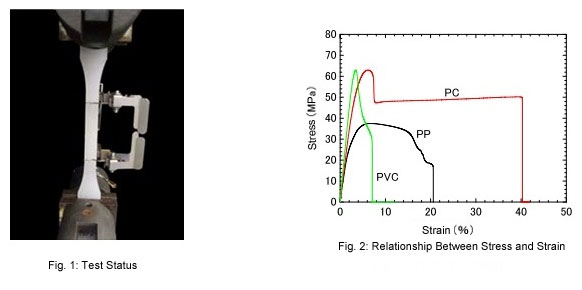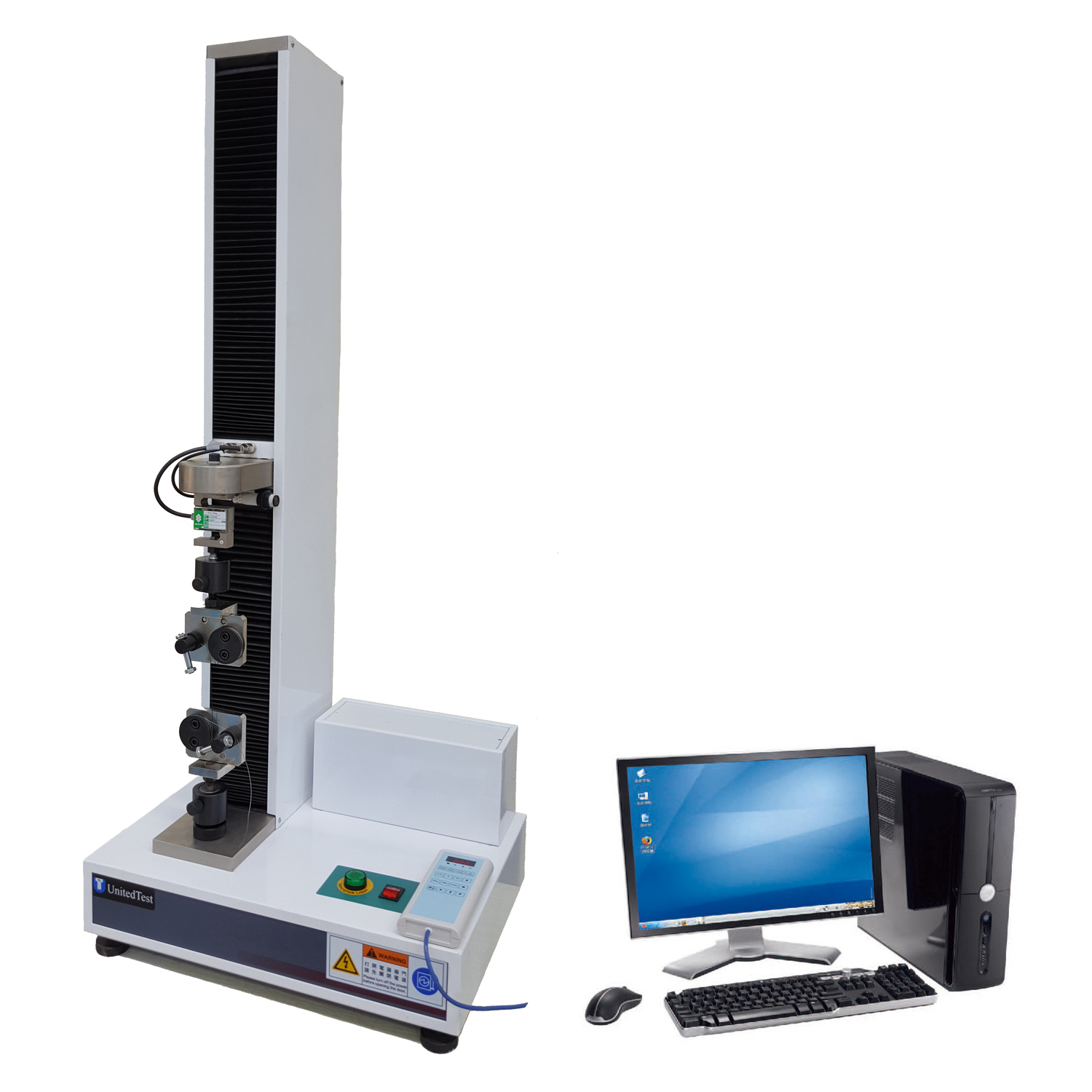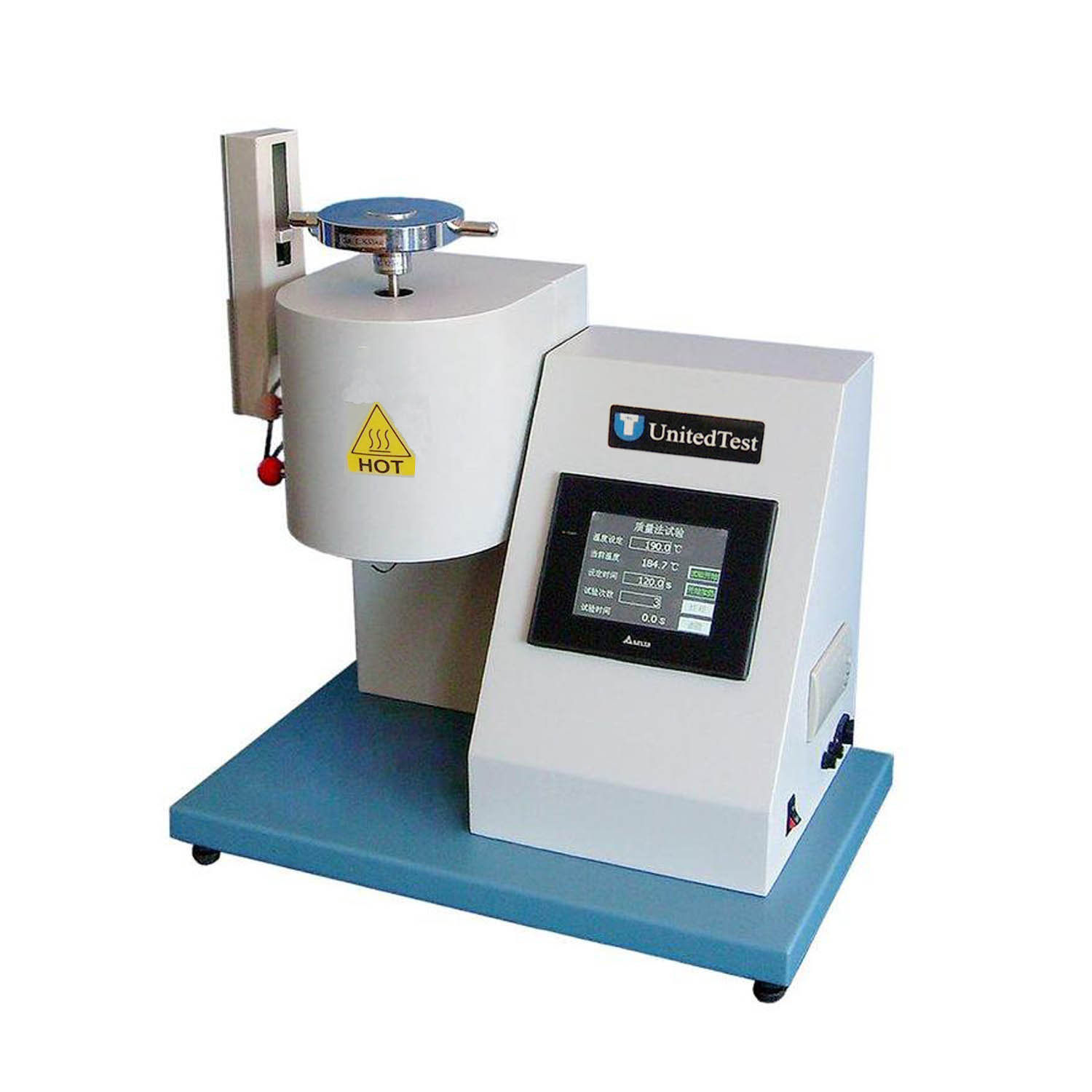Tensile Test equipment of Plastics Composites ISO 527-1
ISO 527-1 covers the test procedures for determining tensile properties of plastics and plastic composites. Tensile properties of plastics that are determined through the practices of ISO 527-1 include tensile strength, tensile modulus and other properties related to stress strain characteristics of plastic materials.
The test methods of ISO 527-1 can be used to test a wide variety of plastic materials, including:
Thermoplastics for molding and extruding.
Thermosetting molding materials
Fiber reinforced thermoset and thermoplastics composites
Thermotropic liquid crystal polymers
According to ISO 527-1, tensile testing of plastics is executed by pulling a test specimen along a major longitudinal axis at a constant rate of extension until failure of the plastic specimen occurs or until a predetermined stress or strain value. ISO 527-1 requires stress and strain measurements to be recorded through the plastic tensile test.
Plastic tensile test specimens are to be used to testing in accordance to ISO 527-1. Plastic components are not tested with the practices of ISO 527-1. The purpose of ISO 527-1 is to determine tensile properties of plastics, and not to determine stress behavior of plastic components.
Scope:
Tensile tests measure the force required to break a plastic sample specimen and the extent to which the specimen stretches or elongates to that breaking point.
Procedure:
Specimens are placed in the grips of the universal tester at a specified grip separation and pulled until failure. For ISO 527 the test speed is typically 5 or 50mm/min for measuring strength and elongation and 1mm/min for measuring modulus. An extensometer is used to determine elongation and tensile modulus.
Specimen size: The most common specimen for ISO-527 is the ISO-3167 Type 1A multipurpose specimen.

The following calculations can be made from tensile test results:
*Tensile strength (at yield and at break)
*Tensile modulus
*Strain
*Elongation and percent elongation at yield
*Elongation and percent elongation at break.
It cover a range of plastics including thermosets, thermoplastics, and fiber-reinforced plastics. Test specimens may be rigid, semi-rigid, molded or extruded plastics, and are commonly in the shape of a dumbbell or dog bone.
The mechanical properties of plastics vary depending on the type of plastic, as well as the additives that may be incorporated into the formulation. Properties, such as strength, ductility and toughness, are influenced by different types of additives. To determine the appropriate testing equipment, it is important to understand how material behavior changes as a result of the various additives.
Refer UnitedTest electronic universal testing machine, load range 100N ~ 50Kn. With pneumatic side-action grips, Wedge grips and manual screw action grips are also suitable. The choice of jaw faces may vary depending on sample and material type, but serrated faces are most common.












